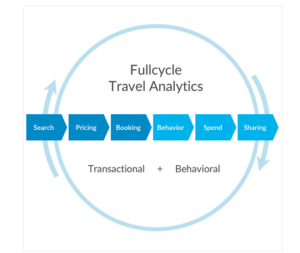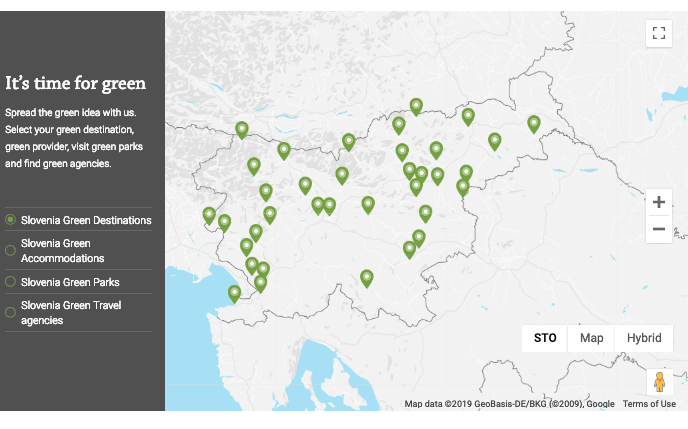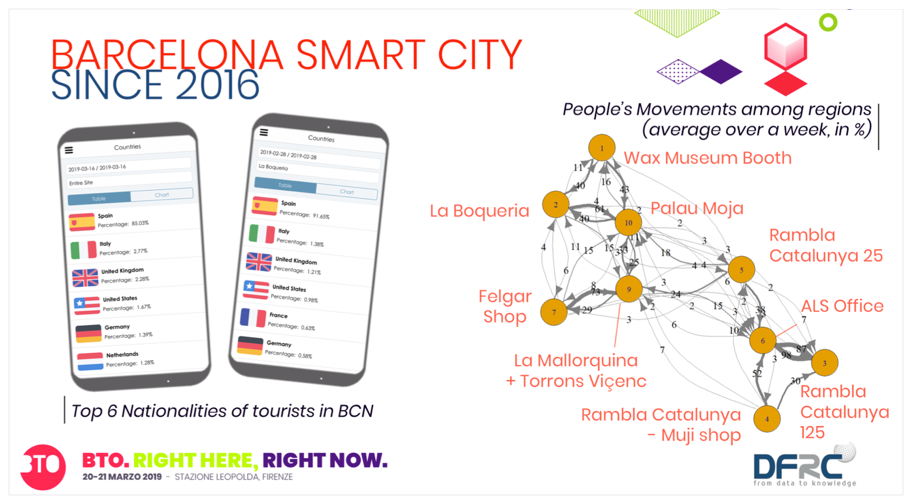This article is published in the White Paper category.
Along with other major players of the ICT industry such as Google, Trivago and Trip Advisor, DFRC took part on Thursday, March 21st, in BTO 11, an international Smart Tourism conference held in Florence, Italy. More specifically, the Destination and Smart Sustainability panel regrouped international speakers interested in finding added value in Big Data for tourism.
Antonio Pezzano, CEO of DMI, introduced and acted as moderator for the Smart Sustainability panel. His long-time experience in tourism culminated in the Note Di Turismo initiative, in partnership with Officina Turistica which consists in offering open access to data and business intelligence material on tourism in Italy, to improve the level of information of decision makers, such as policymakers or directors of tourism organisations, regarding the development of tourism in Italy.
With the ultimate goal of improving destinations’ popularity and links to a broader international market, one of the most common concerns for many cities around the world, as expressed during the panel, is the so-called “overtourism” issue. Cities and destinations worldwide begin the struggle to survive when tourists’ waves hit, during high season or on the occasion of special events and festivals.
How to better manage tourists then? What strategies and technologies could really help decision-makers in distributing tourists all over the year and managing new arrivals in a more sustainable way?
The panel was arranged to show what diverse tools are offered by tech providers to address such questions and how a municipality tackled and won the challenge.

Business Development manager at Mabrian, Anna Borduzha presented her company’s main goal which consists in offering comprehensive data related to tourism and travel, to clients in the industry.
Based on both traditional data from statistics and surveys, and more innovative behavioural data and predictions, Mabrian experts analyse multiple sources of data to build Travel Intelligence insights.
As shown by Figure 1, behavioural data is analysed from a customer’s first tourism-related search in a web browser until the last hotel or restaurant review online.
Specialised in multi-device applications, enterprise architectures, cloud computing and GIS, Andrea Cruciani presented TeamDev and the FIWARE project as well as it’s Italian hub, iHub Umbria. The goal of FIWARE is to provide open access APIs via an open source platform aiming at building smart solutions, for multiple sectors among which tourism. Examples from their Smart City project, marketed as WiseTown, illustrate how technological ecosystems can be used to foster the development of data-driven strategies for cities and tourism.
Data for Sustainability
Regional Destination Organisation Coordinator for Ljubljana Tourism, Alenka Soršak introduced the Green Scheme of Slovenian Tourism (GSST) which consists in a national tool and certification programme, regrouping labelled destinations, accommodation providers, parks and travel agencies under the “Slovenia Green” brand to promote practices of sustainable tourism at a local and international level.

DFRC’s COO, Chiara Bertoldini, explained the capabilities of LBASense Crowd Analytics for smart destinations, based on recent Smart City use cases, such as the analysis of citizens behaviour during the Turin Art Fairs, as part of the European Cultural Heritage preservation project ROCK. As a unique measurement tool for Municipalities, LBASense sensors allow to compare the behaviour of a crowd before and after urban planners implement policies to regenerate a neighbourhood. Other typical touristic Crowd analytics’ projects can also focus on a specific event or around a historical monument, as done in 2016 at La Sagrada Familia in Barcelona.
By detecting mobile phone signals passively, a general overview map of a specific time and area is created, offering access to valuable insights such as minute, hourly or daily resolution footfall count, duration of stay and returning visitors’ ratio.

In Barcelona, an entire zone of the city is currently under monitoring, offering data about tourists’ nationalities and citizens’ mobility flows, in addition to the above-mentioned analytics.
If you wish to implement such a system in your city, contact DFRC for a tailored offer on your scenario.
This project has received funding from the European Union’s Horizon 2020 research and innovation programme under grant agreement No 730280. The sole responsibility for the content of this publication lies with the ROCK project and in no way reflects the views of the European Union.

Data team
Copyright © 2022 DFRC
43 Science Park Road #01-11 Rm 8, Singapore 117408